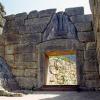Човекът и Морските Пътешествия , Конкистадорите ( или Цивилизационерите ) от древността
-
Теми
-
- 2 мнения
- 202 views
-
- 60 мнения
- 2346 views
-
Руско-украинската война 2022-2024 година. 1 2 3 4 42
От Р. Теодосиев, in Руско-украинската война 2022 година.
- 1047 мнения
- 41638 views
-
Същност или залепен етикет?
От Втори след княза, in Нещата в себе си са етап на познание, сега изследваме нещата по отношение друго нещо
- 16 мнения
- 196 views
-
- 2248 мнения
- 105067 views
-
-
Последно разглеждащи 0 Потребители
- No registered users viewing this page.



Recommended Posts
Напиши мнение
Може да публикувате сега и да се регистрирате по-късно. Ако вече имате акаунт, влезте от ТУК , за да публикувате.